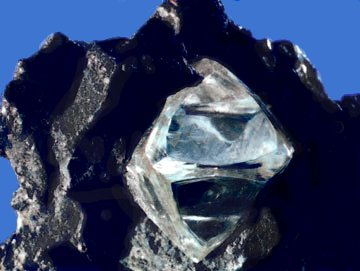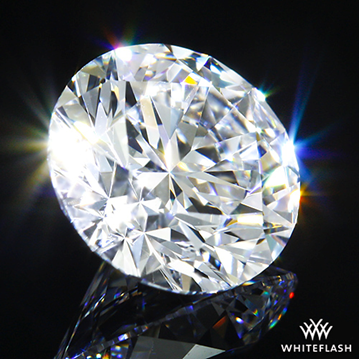This article has mentions of products from one or more companies, and I may receive compensation if you purchase those products following reading my recommendations.
From the classic Round Brilliant to the opulent Marquis, we are first captivated by the multitude of shapes that diamonds are lovingly sculpted into. However, many people confuse ‘cut’ for shape’. Diamond cut doesn’t necessarily refer to the shape of the diamond (although cut is influenced by shape), but rather to the particular proportions, symmetry, and polish that determine the final sparkle of the stone.
A diamond that is cut with craftsmanship will release fire and brilliance; it will reflect and return light in the way only a diamond can.
While the complex intricacies may be unidentifiable to the naked eye, the magnificence of a well-cut diamond is unmistakable when placed next to an inferior stone with a far worse cut quality.
- What is Diamond Cut?
- The Proportions
- Ideal Proportions for a Round Brilliant Diamond
- Diamond Sparkle
- The Grade Quality
- The GIA and AGS Cut Scales
What is Diamond Cut?
What do you first think of when you imagine a diamond? Sparkling, right? Little glints of light that fire off in a thousand different directions. What you’re seeing there is the power of a good cut. For example, lets look at a raw diamond that’s just been mined.

Image credit: Wikipedia
While it’s a pretty interesting geological feature, it’s a little unimpressive. So what happens when its cut by a master craftsman? This:

Image credit: Whiteflash
This is a 1.055 ct F VVS1 A CUT ABOVE® Hearts and Arrows Diamond from Whiteflash, one of the world’s leading diamond retailers. The cut here has been graded as ‘Ideal’ which is the highest they offer. This shot is taken from a video that illustrates the sparkle of the specific diamond. That sparkle, that fire, is only guaranteed by cut.
Cut is the thing that allows better refraction of light. Better the cut, better the refraction—and more sparkle! Basically, cut is the way in which we can coax the best qualities of a diamond, turning it from a lump of (admittedly) rare rock, into something that captivates the imagination.
When cut is graded by an independent certification organization, such as the GIA, GCAL, GSI, or EGL, they look for how the proportions of the diamond play against each other. These proportions directly affect:
- Scintillation: The amount of sparkle produced.
- Brightness: The total amount of internal and external light reflection.
- Fire: The scattering of white light, what we see as rainbow colors emitted from the diamond.
The Proportions
Diamond cut is perhaps the most difficult of the Four Cs to analyze. Because of this gemological institutes such as the GIA and AGS have created comprehensive and internationally accepted grading systems to establish the optimum cut for a diamond. This begins with the ideal proportions between the girdle, table, and pavilion to allow the greatest release of light and life from the facets, which you can see in this diagram.

Ideal Proportions for a Round Brilliant diamond
If the diamond is cut too shallow, the light will simply filter through the sides, reducing the rate of refraction and resulting in a duller diamond. While the diamond will appear larger (due to a larger table), it will not offer the desirable dazzling effect, and will instead seem flat and dull, two qualities you never want in a diamond.
If cut too deep, the light will escape from the bottom of the stone, which is often set against skin. The result is one of a dark, lifeless diamond. You can see the way light enters and refracts in different diamond shapes in this diagram.

Ultimately, the meticulous measurements when cutting a diamond have an absolute influence on the visual impact.
Learn More About the Four Cs Today
The Four Cs—Cut, Clarity, Color, and Carat weight—are the main characteristics that determine both the quality and the price of a diamond. If you’re looking to purchase a diamond, having a good working knowledge of the Four Cs is of paramount importance.
This knowledge can help you determine the good from the bad, figure out how to save yourself a bit of money when it comes to purchase, and, ultimately, ensure you get a good deal. If you’re interested in learning more, head to the Diamond Expert section on the Four Cs today.
Diamond Sparkle
Imagine you have a perfectly proportioned diamond in the palm of your hand, with each of its minute measurements exact. What do you think you’ll see? If the light around you is bright enough, you will see fire, brilliance, scintillation, and finish, which is the clean, even polish across the facets of the diamond that give it a smooth appearance.
The artistry of the cut will release these visual elements from within the diamond. It will play effortlessly with the light, adding eternal value and beauty to the stone.
If you’re looking for a well-known online vendor that has the most ideal cut diamonds on the market with optimal light performance, then check out James Allen's True Hearts or Whiteflash’s A CUT ABOVE® Diamonds. The A CUT ABOVE Diamonds are, in my opinion, the best cut quality available.
The Grade
Determining the cut of a diamond may seem a daunting task. However, all certified diamonds are categorized by independent gem experts using a ‘Cut Scale’, like the one from the GIA below.

Many diamond retailers tend to use their own terms for describing cut grades. For example, Whiteflash’s best cut grade is ‘Ideal’. Blue Nile’s is ‘Astor Ideal’. It’s pretty easy to tell what’s best and what isn’t, but it’s worth acknowledging these small differences when you’re making a purchase.
GIA and AGS Cut Scales
The GIA and the AGS are known as the world-leading independent gem grading labs. However, the GIA are currently in the process of incorporating the AGS into their network, meaning the GIA will be the world-leading gem lab going forward.
Their diamond grading reports they produce provide exact measurements of the cut, as well as where they sit on their grading scale. A poorly cut diamond can hold a high-carat weight, but the glitter and value will be greatly diminished. A ‘Fair’ cut diamond may be more suitable for small earrings, while rings require a ‘Good’ or above.
While any of the other Four Cs may be partially determined by eye, it is impossible to tell the exact cut of a diamond without certification. Looking for a high sparkle and polished finish beneath a jewelers’ magnifying loop can give a small indication, however, certification is the only way to ensure a quality diamond.
Complex. Precise. Masterful. Unlike the other C’s in diamond buying, cut is not immediately obvious to the untrained eye, but do not be fooled. Without the perfect cut, the unique properties of this stone are lost. We are captivated by diamonds for their sparkle and light: a star set in precious metal. This beauty begins and ends with the cut, as it can make a lower-clarity diamond sparkle with an intensity to challenge the purest.
Where to Look for the Best Quality Diamonds?
This is a question I’m asked often, especially by customers who are looking online. My answer? Start looking right here on Diamond Expert.
I’ve used my many years of working in the diamond industry to develop a number of in-depth reviews of some of the best-known, most trusted diamond retailers on the market today. Big names such as Whiteflash (best cut quality diamonds), James Allen (great fancy shaped diamonds), and Brilliant Earth (excellent lab diamonds).
But I will always advise you to do your research on retailers before purchasing from them. That’s why you should read my independent review section. In it, I’ve compiled thoughts and data on many diamond retailers for you to peruse and get a better idea on where is best to buy diamonds and diamond jewelry from, otherwise contact me directly with any questions.
